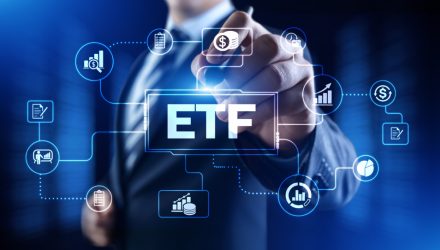For decades, the bulk of business and consumer tech products purchased in the U.S. were manufactured in China. To a lesser extent, they were manufactured in a handful of other countries in the Asia-Pacific.
However, the supply chain vulnerabilities that the coronavirus pandemic laid bare, and ongoing geopolitical tensions between the U.S. and China, have compelled tech original design manufacturers (ODMs) to rethink their dependence on China as a center of production and favorably priced labor.
Those changes have implications for tech-heavy exchange traded funds, including the Invesco QQQ Trust (QQQ) and the Invesco NASDAQ 100 ETF (QQQM). As just one example, Apple (AAPL) has long been heavily exposed to China for production of its gadgets, including the iPhone. That’s starting to change, as India could emerge as a hub of iPhone production. Additionally, Thailand and Vietnam are epicenters of iPad and Mac output.
North America Could Get in on Tech Reshoring
Some U.S. investors and politicians want to see more tech manufacturing return to North America. Action is being taken to that effect. Over the long term, that could pay dividends for QQQ and QQQM member companies.
“We estimate cumulative investments (excluding intra-company flows) by four major suppliers were ~$45B during 2018-2023E,” according to TD Cowen research. “Our analysis suggests China received the largest share at 41% or ~$19B of funds. India and Vietnam combined were 15% while the U.S. and Mexico were 20%. We estimate ODM investments over the past 5 years were up 50%+ vs. 2013-2017. We believe ODM reshoring has higher costs in the near-term. In the long-term it can benefit PC original equipment manufacturer margins once ex-China capacity is fully at scale.”
One of the areas of emphasis regarding North American tech reshoring is the semiconductor industry. That industry is widely represented in QQQ and QQQM. Currently, the bulk of ODM fabrication takes place in Taiwan or South Korea. But there’s the specter of regional geopolitical issues that could make more domestic chip production attractive to some QQQ and QQQM holdings.
“Much of the electronic component ecosystem still resides in Asia today. As new U.S. and German foundry fabs ramp starting in 2025, we expect new capacity for OSAT (outsourced semis assembly and test) services, electronics sub-components, and PCB assembly to follow thereafter in North America and in Eastern Europe,” added TD Cowen.
Combine U.S./China geopolitical tensions with a dearth of available production capacity in Southeast Asia and more companies represented in QQQ and QQQM could look to North America for more of their manufacturing needs.
For more news, information, and analysis, visit the ETF Education Channel.








